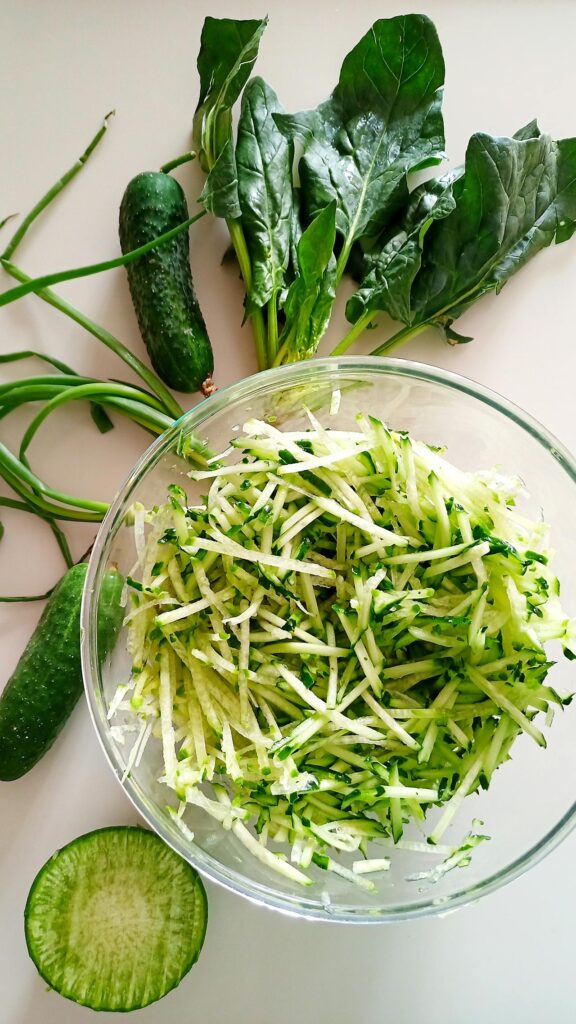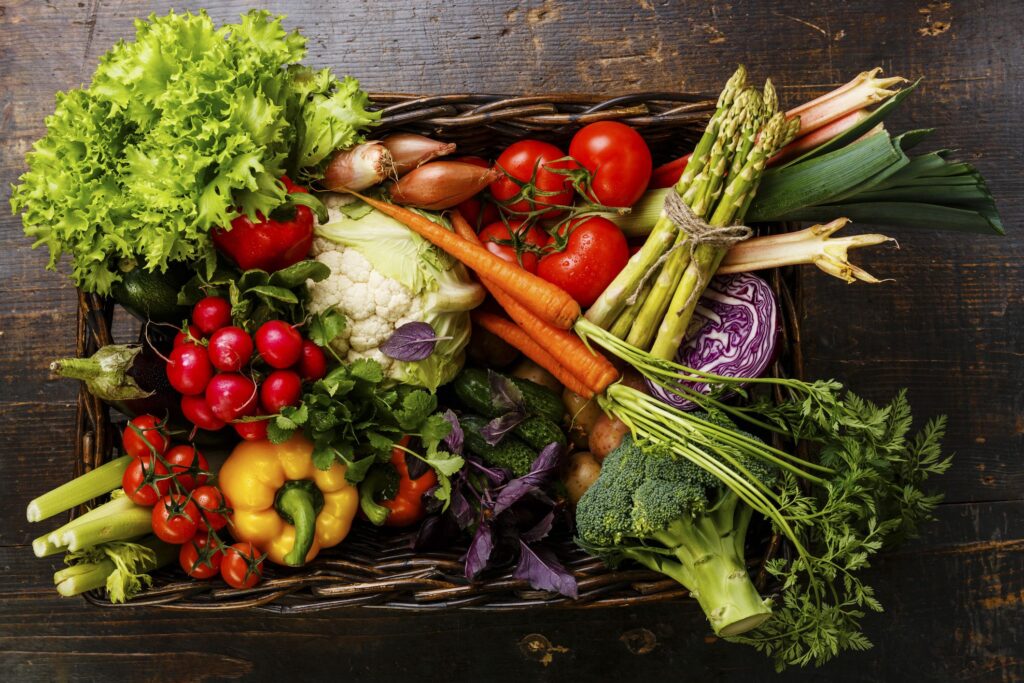Table of Contents
Most popular leafy green vegetables are a cornerstone of a healthy diet, celebrated for their high nutritional value and versatility in various dishes. Whether you’re a seasoned cook or just starting to explore healthier eating habits, incorporating these greens can enhance your meals and boost your health. In this article, we delve into the most popular leafy green vegetables, their health benefits, and ways to include them in your diet.
Health Benefits of Most Popular Leafy Green Vegetables
Leafy greens are packed with essential nutrients, including vitamins, minerals, and antioxidants. They are low in calories and high in dietary fiber, making them ideal for weight management and digestive health. Some of the key benefits include:
- Rich in Vitamins and Minerals: Leafy greens are excellent sources of vitamins A, C, K, and folate, as well as minerals like iron, calcium, and magnesium.
- Antioxidant Properties: These vegetables contain antioxidants that help combat oxidative stress and reduce the risk of chronic diseases.
- Heart Health: The high levels of fiber and antioxidants support heart health by lowering cholesterol levels and improving arterial function.
- Bone Health: High vitamin K content supports bone health and aids in calcium absorption.
- Eye Health: Vitamins A and C, along with lutein and zeaxanthin, protect against age-related macular degeneration.

Popular Leafy Green Vegetables
Spinach
Spinach is one of the most versatile and popular leafy greens. It can be eaten raw in salads, cooked in a variety of dishes, or blended into smoothies.
Health Benefits:
- High in iron and folate
- Excellent source of vitamin K and vitamin A
- Rich in antioxidants like lutein and zeaxanthin
Ways to Use: Salads, soups, stews, smoothies, and sautéed dishes.
Kale
Kale is a nutrient-dense superfood, known for its hardy leaves and slightly bitter flavor.
Health Benefits:
- Extremely high in vitamins A, C, and K
- Contains powerful antioxidants like quercetin and kaempferol
- Supports detoxification due to its high sulfur content
Ways to Use: Kale chips, salads, smoothies, soups, and as a cooked side dish.
Arugula
Arugula, also known as rocket, has a peppery flavor that adds a punch to dishes.
Health Benefits:
- High in calcium and potassium
- Contains compounds that may have anti-cancer properties
- Good source of folate and vitamin K
Ways to Use: Salads, pesto, sandwiches, and as a pizza topping.
Romaine Lettuce
Romaine lettuce is crisp and slightly sweet, often used in Caesar salads.
Health Benefits:
- Good source of vitamin C and folate
- Contains fiber that aids digestion
- Low in calories, making it ideal for weight loss
Ways to Use: Salads, wraps, and as a bed for grilled meats.
Swiss Chard
Swiss chard boasts vibrant stalks and dark green leaves, adding color and nutrition to meals.
Health Benefits:
- High in vitamins A, C, and K
- Good source of magnesium and iron
- Contains betalains, which have anti-inflammatory properties
Ways to Use: Sautéed, in soups, stews, and as a colorful addition to salads.
Collard Greens
Collard greens are a staple in Southern cuisine, known for their thick, slightly bitter leaves.
Health Benefits:
- High in vitamins A, C, and K
- Excellent source of fiber and calcium
- Contains antioxidants that support overall health
Ways to Use: Steamed, sautéed, or braised as a side dish.
Mustard Greens
Mustard greens have a spicy flavor and are rich in vitamins and minerals.
Health Benefits:
- High in vitamins A, C, and K
- Contains glucosinolates, which may have cancer-preventive properties
- Good source of fiber and calcium
Ways to Use: Salads, soups, and stir-fries.
Bok Choy
Bok choy is a type of Chinese cabbage with crunchy stalks and tender leaves.
Health Benefits:
- High in vitamins A, C, and K
- Good source of calcium and potassium
- Low in calories, making it a diet-friendly vegetable
Ways to Use: Stir-fries, soups, and steamed as a side dish.
Watercress
Watercress has a peppery taste and is often used as a garnish or in salads.
Health Benefits:
- Extremely high in vitamins A and C
- Good source of calcium and iron
- Contains compounds that may improve cardiovascular health
Ways to Use: Salads, sandwiches, and as a garnish for soups and dishes.
Nutritional Comparison Table
Below is a comparison of the nutritional content per 100 grams of some popular leafy green vegetables:
| Vegetable | Calories | Vitamin A (% DV) | Vitamin C (% DV) | Vitamin K (% DV) | Calcium (% DV) | Iron (% DV) |
| Spinach | 23 | 56% | 47% | 460% | 10% | 15% |
| Kale | 35 | 206% | 134% | 684% | 15% | 8% |
| Arugula | 25 | 47% | 25% | 136% | 16% | 8% |
| Romaine Lettuce | 17 | 148% | 4% | 97% | 3% | 2% |
| Swiss Chard | 19 | 122% | 50% | 1038% | 10% | 22% |
| Collard Greens | 33 | 48% | 21% | 388% | 23% | 2% |
| Mustard Greens | 27 | 32% | 59% | 419% | 10% | 5% |
| Bok Choy | 13 | 62% | 46% | 45% | 11% | 6% |
| Watercress | 11 | 238% | 72% | 312% | 12% | 2% |
How to Incorporate Leafy Greens into Your Diet
Incorporating leafy greens into your diet can be easy and delicious. Here are some tips to get you started:
- Salads: Create vibrant salads with a mix of different greens. Add fruits, nuts, seeds, and a light dressing for a nutritious meal.
- Smoothies: Blend greens like spinach or kale into smoothies. The flavor is often masked by fruits like bananas and berries.
- Soups and Stews: Add greens to soups and stews for extra nutrition. They cook down well and blend seamlessly with other ingredients.
- Stir-Fries: Quickly stir-fry greens with garlic and olive oil for a simple side dish.
- Wraps and Sandwiches: Use large leafy greens as wraps or add them to sandwiches for a crunch and nutritional boost.
- Pasta and Grains: Toss cooked greens into pasta or grain dishes. They add color and nutrients without overwhelming the dish.

Frequently Asked Questions (FAQs)
What is the most nutritious leafy green vegetable?
Kale is often considered one of the most nutritious leafy greens due to its high content of vitamins A, C, and K, as well as its antioxidant properties.
Can I eat leafy greens every day?
Yes, leafy greens can be eaten daily and provide numerous health benefits. It’s beneficial to vary the types of greens you consume to ensure a broad intake of nutrients.
How should I store leafy greens to keep them fresh?
Store leafy greens in the refrigerator. It’s best to keep them in a crisper drawer, in a container with a damp paper towel to maintain moisture.
Are cooked greens as nutritious as raw greens?
While cooking can reduce some vitamins (like vitamin C), it can also make other nutrients more accessible and easier to absorb. Both raw and cooked greens have their benefits.
Can leafy greens help with weight loss?
Yes, leafy greens are low in calories and high in fiber, making them a great choice for weight loss. They help you feel full and satisfied without consuming many calories.
Conclusion
Incorporating a variety of leafy green vegetables into your diet can significantly boost your nutrient intake and contribute to overall health. Whether you prefer them raw in salads, blended in smoothies, or cooked in various dishes, these greens offer a plethora of benefits. Experiment with different types and recipes to find what you enjoy the most, and watch your health improve with each delicious bite.
Leafy greens are an essential part of a balanced diet, and their popularity is well-deserved. By understanding the benefits and versatility of these vegetables, you can easily make them a regular part of your meals and enjoy their health-boosting properties.
Similar Links:
Best Green Leafy Vegetables for Pregnancy: The Ultimate Guide 2024

Leave a Reply